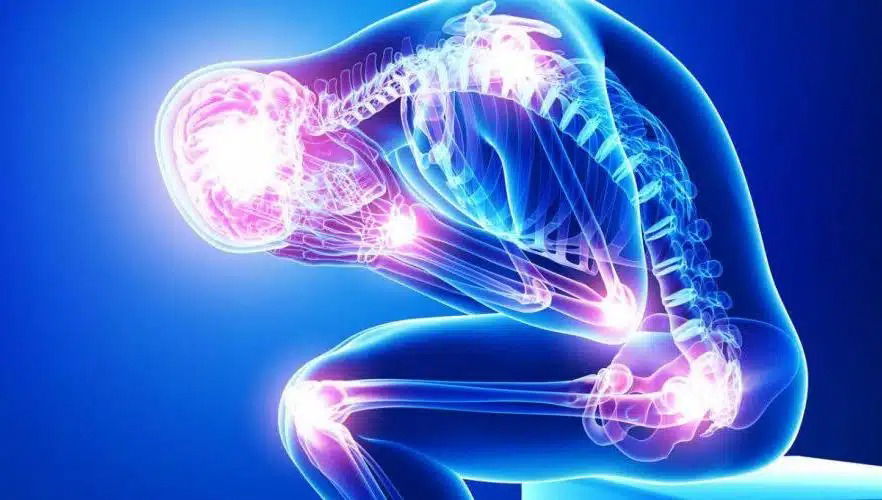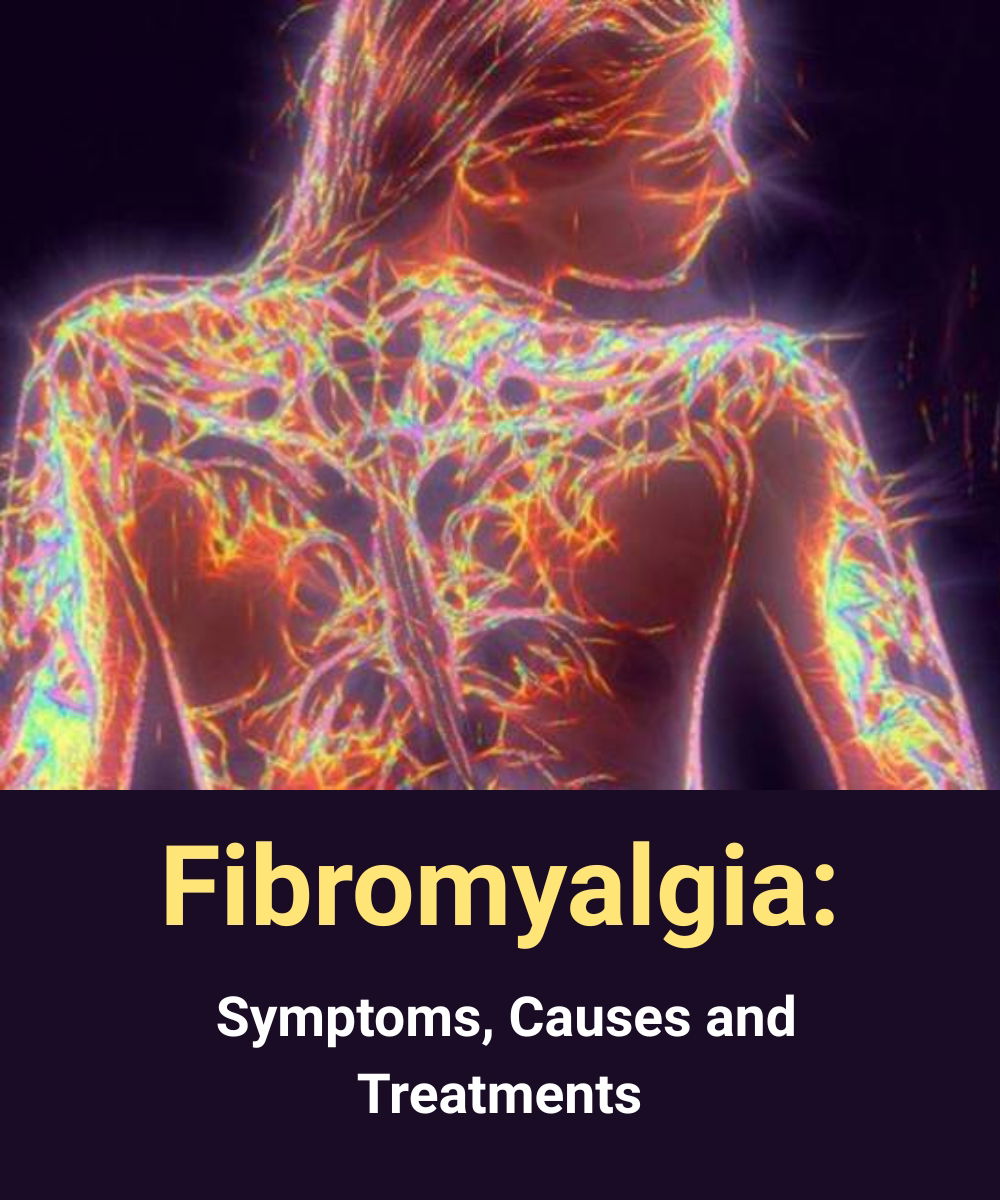
Imagine walking through life carrying an invisible backpack filled with stress, sadness, and unresolved emotions. Day after day, this emotional weight grows heavier, slowly impacting both your body and mind.
Some experts even refer to fibromyalgia as “the illness of unspoken emotions” — a condition where repressed feelings seem to take shape as chronic, widespread physical pain. But is there a way to lighten this emotional load and find relief?
The Connection Between Emotions and Fibromyalgia
For centuries, humans have been seen as a delicate balance of body, mind, and soul — all deeply connected. When this balance is disturbed, health issues often arise, and fibromyalgia may be one such example.
People suffering from fibromyalgia frequently deal with persistent muscle pain, extreme fatigue, and disrupted sleep. What many don’t realize, however, is how closely their emotional state can influence their symptoms. Feelings like frustration, anxiety, or suppressed anger — when left unspoken or bottled up — can amplify the intensity of physical pain.
How Do Repressed Emotions Trigger Physical Pain?
Picture a balloon being squeezed tighter and tighter without release — eventually, it either bursts or becomes misshapen. Similarly, when negative emotions are buried inside and left unexpressed, they create chronic stress that weakens the immune system and strains the body.
Research has found that people with fibromyalgia often experience emotional struggles like depression or anxiety. When the mind is overloaded with negativity, the body feels the impact — every cell seems to absorb that emotional energy.

The Vicious Cycle of Pain and Emotional Suppression
Physical pain often triggers frustration, sadness, and anger. Yet repressing these feelings only strengthens the cycle of suffering — the more emotions are bottled up, the worse the pain can become.
This creates a complex emotional maze where ongoing pain feeds emotional distress, and emotional distress, in turn, intensifies physical symptoms. Over time, this exhausting cycle may even lead to depression, which further aggravates fibromyalgia.
How to Break Free From the Cycle
Finding relief starts with learning to release, not repress, your emotions. Here are some strategies to help lighten your emotional load and improve your well-being:
1. Express Your Emotions
Don’t let feelings build up like steam in a pressure cooker. Find healthy outlets to express yourself through talking, journaling, creative arts, or any activity that allows your emotions to flow.
2. Cultivate a Positive Mindset
While it may sound simple, developing a positive outlook can help manage fibromyalgia symptoms. It’s not about ignoring problems, but about focusing on solutions and appreciating small victories.
3. Practice Relaxation Techniques
Relaxation practices like meditation, deep breathing, or yoga can help ease both physical tension and emotional stress. Many wellness centers now offer programs specifically designed for people coping with chronic pain.

4. Seek Professional Support
Working with a psychologist, therapist, or emotional coach can help you identify suppressed emotions and express them in healthy, constructive ways.
Restoring Balance Between Body and Mind
Living with fibromyalgia is not just about managing physical symptoms — it’s about reconnecting with your emotions and acknowledging their impact on your health. When you learn to recognize, accept, and express what’s weighing you down, you take a powerful step toward healing.
The key is to stop carrying invisible burdens in silence. Release what has been buried inside and rediscover the emotional balance that can lead you toward a lighter, more peaceful life.
Fibromyalgia: Symptoms, Causes and Treatments

Fibromyalgia is a complicated and exhausting condition that affects millions of people around the world. This article explores the symptoms, causes, and treatment options available to those living with fibromyalgia.
Fibromyalgia Overview
Fibromyalgia is a popular cause of chronic, widespread musculoskeletal pain. People living with fibromyalgia often have increased sensitivity to pain compared to those without the condition.
Symptoms of fibromyalgia
Common symptoms of fibromyalgia include:

- Generalized pain throughout the body
- Inflexibility in muscles and joints, especially after periods of rest
- Headaches
- Disturbed sleep patterns
- Tingling and numbness in the extremities
- Restless Leg Syndrome
- Sensitivity to temperature changes
- Cognitive difficulties often called “fibro fog”
- Fatigue
- Irritable bowel syndrome (IBS)
- Additional symptoms may include vision problems, nausea, pelvic and urinary problems, sudden weight fluctuations, dizziness, flu-like symptoms, skin problems, chest discomfort….
Causes of Fibromyalgia

The true cause of fibromyalgia is still unclear, but current understanding in rheumatology suggests that it involves abnormalities in pain processing in the central nervous system (CNS). Many factors increase the possibility of developing fibromyalgia, including:
- Physical or emotional traumatic events, such as accidents
- Repetitive injuries
- Autoimmune conditions such as RA or lupus
- Abnormalities in the central nervous system
- Genetic factors that influence pain perception
- There is a transmitted component to fibromyalgia, with women at higher risk if they have close relatives affected by the condition.
Fibromyalgia Treatment
Managing fibromyalgia is ambitious and often demands a treatment plan tailored to each individual, created by a specialist, such as a rheumatologist.
Treatment options include:

- Low-impact exercise programs
- Acupuncture
- Psychotherapy
- Chiropractic
- Massage therapy
- Physiotherapy
- Stress management techniques
- Cognitive Behavioral Therapy (CBT)
- Medications such as antidepressants, muscle relaxants, and nerve pain medications
Each individual deal with fibromyalgia differently, which demands personalized treatment strategies to effectively control symptoms and enhance quality of life.
Conclusion
Fibromyalgia is a burdensome condition to control that demands a variety of treatments to help control symptoms and enhance the well-being of those affected. With the help of specialized doctors, such as rheumatologists and therapists, it is possible to ease pain and help patients adapt to everyday life, making it more comfortable and productive.















